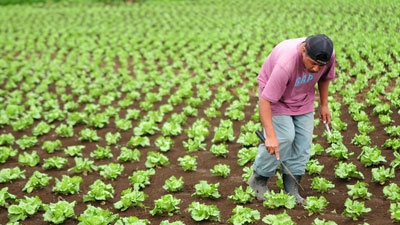Is there anything “greener” or more idyllic than fields of crops? Today, some two-fifths of the Earth’s surface is used for agriculture due to the explosion of the global population and economic growth.
However, environmentalists have begun to sound the alarm. With so much land to sow, water, plough and process, the agricultural sector is responsible for an estimated 70% of water consumption worldwide, a quarter of greenhouse gas emissions, nearly a third of energy consumption and 80% of deforestation.
It is the paradox of humanity: with more mouths to feed, more land needs to be cultivated, which in turn increases the probabilities of exhausting land and natural resources. We are feeding ourselves at the cost of future generations.
In Latin America, millions of people depend on agriculture for their livelihood. Along with Asia, the region will be responsible for an additional 75% of agricultural production over the next decade, according to a FAO-OECD report.
Historically, intensive agriculture has been considered key to food security. But at what cost? The overuse of fertilizers and water resources is creating major environmental problems worldwide.
If we consider that the global population is expected to grow to more than 9 billion by 2050, the outlook for the planet is alarming. A 50% increase in food production is required to guarantee food security for all. The environmental impact of this increase could be dramatic hence, the World Food Day slogan: “feeding the world, caring for the earth.”
"Reaching this target (of increased production) will require expanding cultivated areas, particularly in the developing world, which will have implications for the sustainability of the land, fresh water, biodiversity and the Earth’s climate,” said Mohamed Bakarr, Senior Environmental Expert for the Global Environment Facility (GEF).
According to Bakarr, the key to achieving global food security is to increase the productivity of existing agricultural lands in a way that guarantees the sustainability of natural resources that are resistant to the effects of a constantly-changing world.

